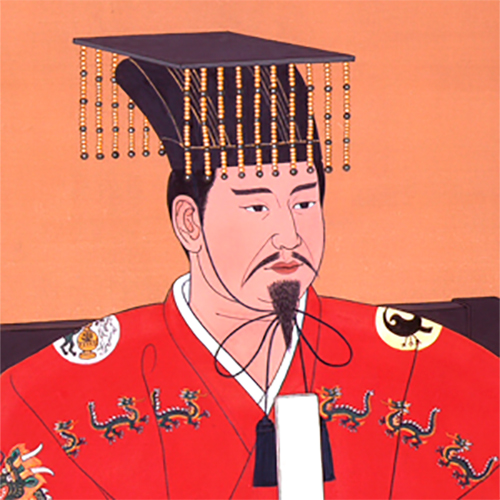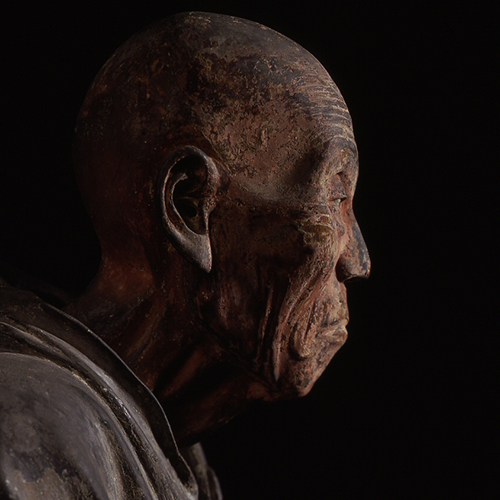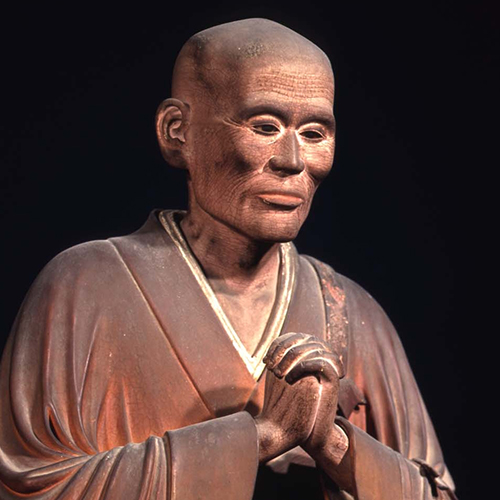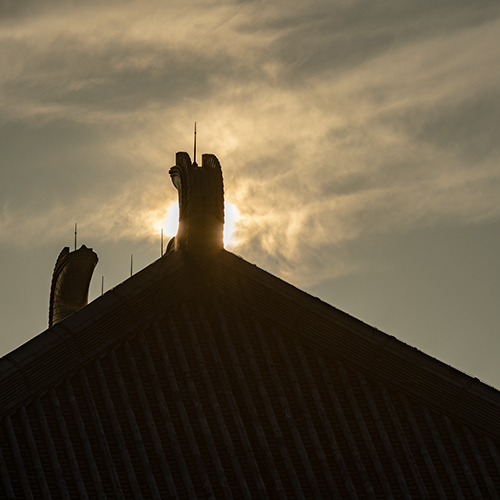History of Tōdai-ji Temple
The origins of Tōdai-ji lie in a temple called Kinshō-ji which was founded in 728 for the repose of the spirit of Crown Prince Motoi, son of Emperor Shōmu (r. 724-749). In 741 when the Emperor issued his edict ordering the construction of a national system of monasteries (Kinkōmyō-ji) known as the Kokubun-ji, Kinshō-ji was elevated in status. In 743 Emperor Shōmu issued his proclamation for the erection of a Great Buddha Image and when the capital was returned to Heijō (Nara) construction of the colossal image of Vairocana was begun on the grounds of the Kinkōmyō-ji and was completed in 749. Construction of the Great Buddha Hall took place concurrently and the image was dedicated in 752 with a lavish consecration ceremony. Subsequently the Office for the Construction of Tōdai-ji supervised the building of the West and East Pagodas, the Lecture Hall and Monks’ Quarters to complete the temple complex.
Because Tōdai-ji was the chief temple in the Kokubun-ji system, it was a center for rituals for the peace of the nation and the prosperity of the people; it also functioned, however, as a center for the training of scholar monks who studied Buddhist doctrine.
In 855 the head of the Great Buddha fell off in a major earthquake. The image was quickly restored. In subsequent years fires and lightning destroyed the Lecture Hall, the Monks’ Quarters and the West Pagoda. In 1180 more than half of the compound including the Great Buddha Hall was destroyed in the fire that resulted from the attack on the Nara temples by Taira no Shigehira. In the next year restoration of the temple was begun by the monk Chōgen (1121-1206) and in 1185 the Great Buddha was consecrated. In the following year the Province of Suō (Yamaguchi Prefecture) was designated to provide income for the reconstruction of Tōdai-ji and the pace of the work increased. Ten years later the Great Buddha Hall was completed. As the temple was reconstructed scholastic activities which had been stagnant were also revived and during the Kamakura period (1185-1333) the temple trained many scholar-monks.
In 1567, however, the temple burned again during a skirmish between the Miyoshi and Matsunaga clans, and the only structures not burned were the Nigatsu-dō, Hokke-dō, Great South Gate, Tegai-mon Gate, Shōsō-in and the Bell Tower. Because the country was at war, restoration was extremely difficult and the only repairs that could be made were to cover the head of the Great Buddha with copper sheathing. Finally in the mid-Edo period the monk Kōkei (1648-1705) petitioned the shogunal government for permission to solicit donations throughout the land and to seek the assistance of some powerful warlords and thus a proper restoration was finally begun. As a result of these efforts, the present Great Buddha was consecrated in 1692 and the Great Buddha Hall was dedicated In 1709.
After the start of the Meiji period in 1868 edicts legislating the separation of Shinto and Buddhist religious establishments and the confiscation of temple lands threatened the existence of Tōdai-ji. Nevertheless, the temple managed to carry out major repairs to the Great Buddha Hall at the start of this century and again in the 1970s and has striven to preserve the extensive compound with all its structures. Tōdai-ji today preserves many precious cultural treasures from the temple’s past, yet it also is a treasure house of traditional Buddhist rituals such as the Shuni-e held at the Nigatsu-dō. Many people from throughout Japan and the world visit the temple to worship and pay their respects every year.





